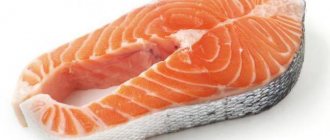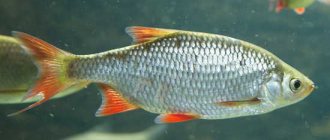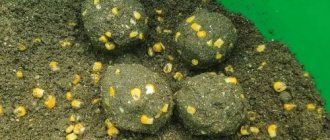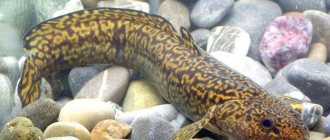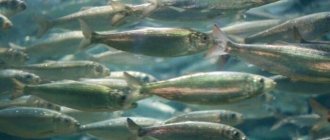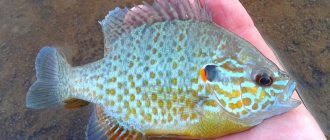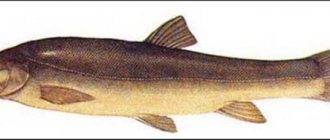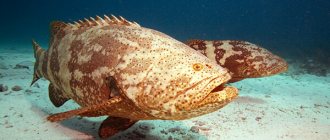Eating products of animal origin, including fish, always carries the risk of infection with various types of helminths.
Insufficient heat treatment increases the likelihood of helminthic infestation for humans. Cooking methods such as drying and cold smoking allow the eggs and larvae of parasitic worms found in muscle tissue and eggs to remain viable for a long time.
Among the most dangerous types of helminthiases that develop as a result of eating fish is opisthorchiasis, which is usually transmitted to the carrier during consumption of fish from the carp family and some other species. When answering the question whether peled is an opisthorchiasis fish or not, as well as in relation to other species, one should consider its belonging to a specific family and genus of fish.
What is opisthorchiasis?
Opisthorchiasis is a helminthiasis caused by the entry and reproduction in the body of the carrier of flatworms Opisthorchis, which are also called liver flukes. This type of worm affects the hepatobiliary system - the liver, gallbladder, bile ducts and pancreatic ducts. Liver flukes cause the main harm to the host body through mechanical and toxic means.
Opisthorchids attach to the walls of the bile ducts using suction cups, disrupting blood circulation in the mucous membrane and sometimes damaging the tissues of these organs. Helminth infestation with worms and trematode eggs can cause blockage of the bile ducts.
The waste products of parasites cause intoxication of the body and also increase its sensitivity to allergens. If opisthorchiasis is not treated, the disease continues for a long time in a chronic form with periods of exacerbation, and in the future it can provoke primary liver cancer.
The list of fish containing opisthorchiasis is quite large and includes all species of the carp family.
All freshwater fish living in the basins of large rivers in Russia, Ukraine, and Kazakhstan are at risk of infection with helminthiasis due to the characteristics of their life activity, both the fish itself and the biological cycle of the trematode.
Fish living in the middle and lower reaches of the Ob and Irtysh rivers show the maximum level of infection with Opisthorchis liver flukes.
Benefits and harms in diseases
The beneficial properties of whitefish help prevent pathologies and fight diseases. However, the product becomes healing only if it is properly prepared and consumed in moderation.
Examples of the influence of whitefish on humans:
- Diabetes. Fish helps maintain normal cholesterol levels and increase the body's defenses weakened by disease. Boiled, steamed or baked whitefish is healthy. You can eat 150 g of it 2 times a week. Fried, smoked, canned foods are harmful: they increase cholesterol.
- Hypertension. Regular consumption of fish keeps blood pressure normal. If you get sick, you need to eat 150 grams of steamed, stewed or baked whitefish 2-3 times every 7 days. It is dangerous to eat salted fish. It provokes fluid retention in the body, which leads to increased blood pressure.
- Anemia. Whitefish contains trace elements and vitamins that accelerate the production of red blood cells and hemoglobin. In case of pathology, fish dishes are allowed up to 4 times a week, 200 g each. It is better to bake the product, fry it on the grill, or stew it with vegetables.
- Gastritis, stomach ulcer. Fish helps prevent inflammatory processes and improves the functioning of the stomach and intestines. Whitefish can be consumed after the onset of stable remission, 2 times a week, 100 g each. It should be boiled, baked or stewed. During an exacerbation, fish is prohibited: the body may not cope with the absorption of fats, and the patient’s condition will worsen.
- Osteoporosis. Whitefish helps replenish calcium, fluoride and vitamin D, which are essential for maintaining bone density. If a disease is detected, include fish in the menu 3-4 times a week. The daily norm is 200 g. Stewed, boiled and baked products are useful for the patient. You can also include 100 g of lightly salted whitefish in your diet 2 times a week.
- Varicose veins Salmon are useful for pathology; they help maintain the elasticity of veins and blood vessels and improve blood circulation. Whitefish can be eaten 2 times a week, 200 g each. It needs to be boiled or baked.
In what types of fish does opisthorchiasis occur?
Opisthorchiasis: which fish have it? The generally accepted list of which fish contain opisthorchiasis includes the following types:
- carp;
- ide;
- roach;
- tench;
- asp;
- spike;
- bream;
- ram;
- dace.
This is not a complete list of which fish contain opisthorchiasis, and eggs and larvae of trematodes are often found in the meat and caviar of many other species.
Most often, opisthorchiasis infection in humans occurs when eating carp, ram, ide and dace.
Freshwater non-predatory fish are more susceptible to helminthiasis, because... it has a fairly low content of cholic acid, which is a natural biological substance to fight viruses, microbes and parasites.
Which fish suffers from opisthorchiasis the least or is not at all susceptible to infection with trematodes? It is generally accepted that opisthorchiasis practically does not occur in fish of predatory species due to the high content of cholic acid.
Therefore, opisthorchiasis in pike, as well as in other predatory species (bluefish, catfish, chub), does not occur in fishing and fishing practice.
However, biologists identify several species of predatory fish that still have a risk of contracting opisthorchiasis - burbot and pike perch. These are river fish species that feed on small fish. The latter, if it is infected with helminths, can cause helminthic infestation in these predators.
Spawning of the redhead
The river pyzhyan begins to spawn from the end of August until the start of freeze-up. The fish that live in the Yenisei gather in schools and travel two to three hundred kilometers upstream, looking for a suitable place to spawn. Some of the fish enter the rivers flowing into the Yenisei. For lake Siberian whitefish, spawning can last until January. Females reach sexual maturity after eight years, and males after five. Read also: Pike spawning in detail
In the semi-anadromous species, spawning begins a little later - in October-November. To lay eggs, females choose an area with a pebble, sandy or rocky bottom at depths of up to three meters. The rest period between spawning lasts more than a year.
Peled: opisthorchiasis or not?
Some biologists argue that opisthorchiasis is also impossible in fish of the whitefish and sturgeon genus. Marine species are least susceptible to opisthorchiasis, because salt water is an unfavorable environment for parasites to reproduce. But much depends on the concentration of salt in the water and the specific habitat. Low-salt sea bays may contain fish infected with Opisthorchis flatworms.
As for peled, it belongs to the salmon family and the whitefish genus, and this can give a preliminary answer to the question, is peled an opisthorchiasis fish or not? In natural habitats, the possibility of infection with liver flukes is quite low. But if peled are bred artificially in small ponds, then helminthic infestation of individuals is possible.
Where is the pyzhyan found?
The habitat of the Siberian whitefish is quite extensive - almost all rivers flowing into the Arctic Ocean from Murmansk to the Arctic regions of Canada. The wide Yenisei and a number of rivers that are its tributaries - Mana, Angara, Kan and others - are especially rich in this fish. This is interesting: Red fish - what kind of fish is this?!
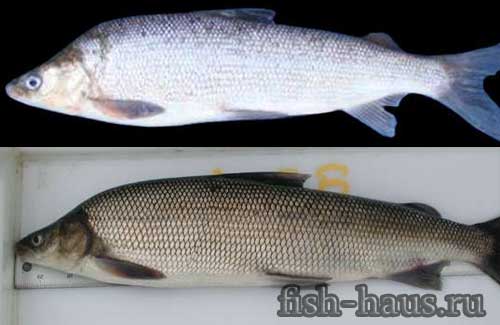
There are also many redheads living in the Ob, Kara Bay and Gydan Bay. Among other main places of residence of Siberian whitefish, I would like to note the following:
- rivers - Oyahu, Seyahu, Lyakka-yahu, Er-yahu, Sab-yahu, Yuribey, Mordyyahu, Tambey;
- lakes - Neito, Polkurto, Yambuto, Hento, Erto, Mordy-Malto.
Most often, the whitefish is caught in the catches of Yamal residents, for whom it is one of the main commercial fish of the whitefish genus.
Does pike have opisthorchiasis?
The answer to the question of whether pike has opisthorchiasis lies on the surface. Pike, which is a predatory fish species, according to most experts, cannot suffer from helminthiasis. The protective properties of the body of this species do not allow parasites to develop, so the answer to the question of whether pike suffers from opisthorchiasis is negative with 99% accuracy.
In some cases, opisthorchiasis in pike can occur when ingesting contaminated feed fish, but such cases are extremely rare. It is very difficult for a person to become infected with opisthorchiasis from pike, but if you eat the liver of weak, infected fish, the risk of infection increases, because flukes usually infect this organ.
Which other fish have opisthorchiasis and which don’t: list
Despite the fact that the classification of fish into families and genera is the basis for preliminary diagnosis of the absence of helminthic infestation, this is not an absolute guarantee that infection will not occur. Depending on the life cycle and habitat, the protective properties of ichthyofauna may change. Some species, even those classified as predatory, may be susceptible to helminthiasis, incl. fish opisthorchiasis.
Muksun
This freshwater fish of the whitefish genus of the salmon family is a favorite delicacy of the inhabitants of Siberia.
It has very tasty, tender and fatty meat with a low content of intermuscular bones. The answer to the question whether muksun suffers from opisthorchiasis cannot be unambiguous. Since this is a genus of whitefish, theoretically, infection of muksun with opisthorchiasis is unlikely. The risk of disease is also reduced by the fact that this fish is found in cold northern waters, where the survival of parasites is extremely difficult. However, cases of muksun infection with helminths are still recorded.
Traditionally, muksun is consumed in the form of stroganina or lightly salted balyk. This method of preparation increases the risk of a person contracting opisthorchiasis from muksun, since muksun can become infected when entering the river to spawn.
Pyzhyan
Pyzhyan, or Siberian whitefish, is a popular type of commercial fish, valued for its high nutritional and taste qualities. Most often, pyzhyan is consumed in the form of canned food, especially in tomato sauce. This species can also be susceptible to helminthic infestation by trematodes, and opisthorchiasis of the redhead is possible, especially if we are talking about a semi-anadromous or river form of fish.
Perch
It is generally accepted that perch is not the type of fish that causes opisthorchiasis. The question of the possibility of opisthorchid infection of perch is quite controversial. Since this is a river species, the possibility of perch becoming infected with opisthorchiasis by eating small forage fish with worm larvae still exists, although very small.
Ide
Since ide belongs to the carp family, it is generally accepted that it is highly susceptible to helminthic infestation by liver flukes.
Opisthorchiasis in fish is most often found when fishing in fresh water bodies - rivers, flowing lakes and ponds, but it also occurs in slightly salted sea bays.
In the latter case, the probability of infection of ide with opisthorchiasis is reduced, because the parasite does not survive in salt water.
Sterlet
This species belongs to the sturgeon family, therefore, it is little susceptible to infestation by liver flukes. It is generally accepted that parasites practically do not survive in sturgeon, as well as whitefish. An additional safety factor regarding sterlet can be considered the fact that today it comes to stores mainly from fish factories, where the factor of infection of sterlet with opisthorchiasis and other helminthiasis is very low.
Does mackerel have opisthorchiasis?
Mackerel is a valuable commercial fish with tasty, fatty and nutritious meat. The answer to the question whether there is opisthorchiasis in mackerel is ambiguous. This is a marine species that is considered safe by definition in terms of the risk of helminthiasis.
However, in fact, parasites are often found in mackerel, although to a lesser extent than in freshwater species.
It is recommended to use cold smoked mackerel with caution, because... This treatment method is not sufficient to get rid of helminths. If we are talking about hot smoked mackerel, then we can say with 99% accuracy that there are no parasites in the product.

